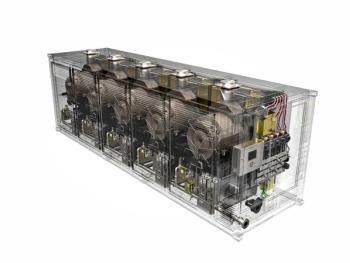
Retouching electroless nickel
Selective electroplating as an alternative to replacing or replating parts.
By Thomas Chapman
Nickel and nickel alloy surface coatings create a tough finish with anti-corrosion properties. In particular, nickel-phosphorous plating alloys have grown in popularity. They can be applied electrolytically, but are more commonly applied through an electroless, autocatalytic process that provides coating uniformity across complex geometries.
Electroless Nickel-Phosphorous (ENP) plating happens in an immersion tank. This can cause problems during repairs as replating of already coated areas may cause the part to be out of tolerance due to an excess build-up of material. Some attempt to overcome this by either masking or chemically stripping the entire part before replating. Such methods can be risky, time consuming, and sometimes are cost prohibitive.
An alternative is selective electroplating. It is focused only on specific areas rather than the entire part geometry. Components that might ordinarily be scrapped, can be saved without compromising the quality or integrity of the part. Nickel plating that mirrors the performance characteristics of ENP can be applied accurately to small and clearly defined areas without the need to immerse the part in a plating bath. This eliminates the need to replate the whole part, and in many cases, the need to disassemble components.
Originally developed in 1938, selective plating is used today in industries such as military, aerospace, and energy. An electric current is run through a circuit which is completed when an anode – the plating brush – touches the component to be plated. This allows the deposit to flow onto the negatively charged part. This process is done without the need to immerse the part in a traditional plating tank. The deposit can be applied to very localized areas without the need for post-machining. Deposition rates are considerably faster than tank plating. Though it can be automated, manual selective electroplating is effective and usually requires only a portable kit that can be carried to facilitate spot retouching.
Sifco ASC has developed the 5709 Nickel-Phosphorous coating, which is the same plating alloy used in electroless nickel plating. The plating operator can adjust plating parameters to apply different levels of phosphorus content depending on the application. Both low and high phosphorous coatings can be applied depending on the desired surface characteristics. When applied with a high phosphorous content, the coating structure changes from crystalline to amorphous, resulting in a corrosion-resistant coating. It uses less energy and produces less effluent waste than tank plating. The process can be automated to deliver consistent application during pre-treatment and plating.
Newsletter
Power your knowledge with the latest in turbine technology, engineering advances, and energy solutions—subscribe to Turbomachinery International today.




